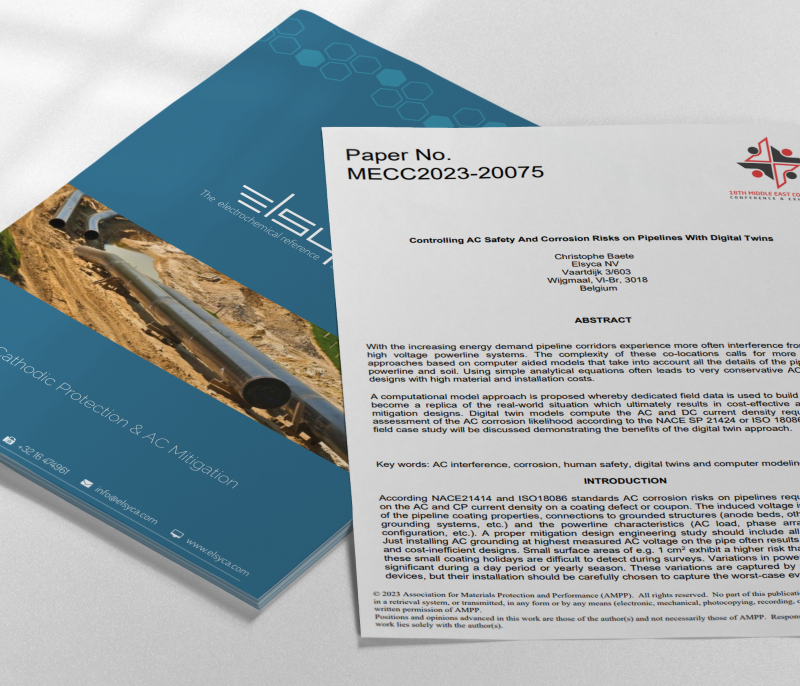
Controlling AC Safety and Corrosion Risk Assessment on Pipelines with Digital Twins
18thMECC 2023 - Conference Paper

Controlling AC Safety and Corrosion Risk Assessment on Pipelines with Digital Twins
Christophe Baeté, Elsyca NV.
Abstract
With the increasing energy demand pipeline corridors experience more often interference from multiple high voltage powerline systems. The complexity of these co-locations calls for more advanced approach based on computer aided models that take into account all the details of the pipeline, CP, powerline and soil. Using simple analytical equations often leads to very conservative AC mitigation designs with high material and installation costs.
A computational model approach is proposed whereby dedicated field data is used to build models that are a replica of the real-world situation which ultimately results in cost-effective and safe AC mitigation designs. Digital twin models compute the AC and DC current density required for the assessment of the AC corrosion likelihood according to the NACE SP 21424 or ISO 18086 standard. A field case study will be discussed demonstrating the benefits of the digital twin approach.
If you're interested in learning more about this paper, do not hesitate to contact us!
